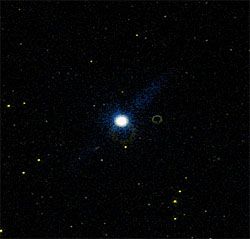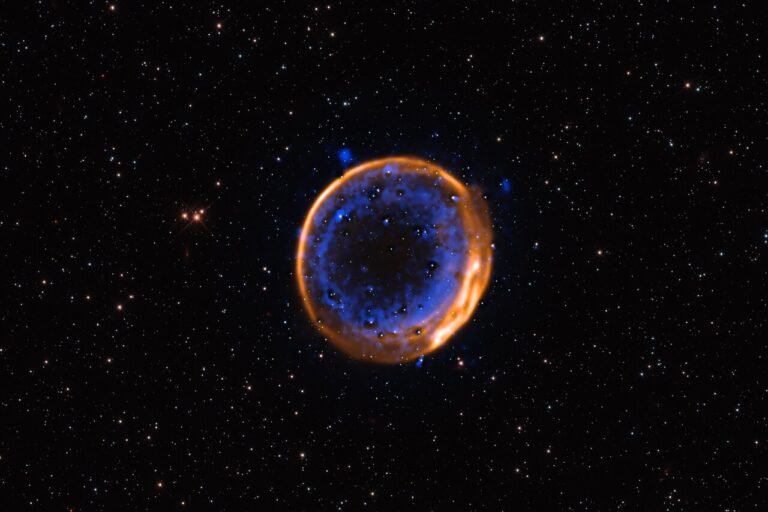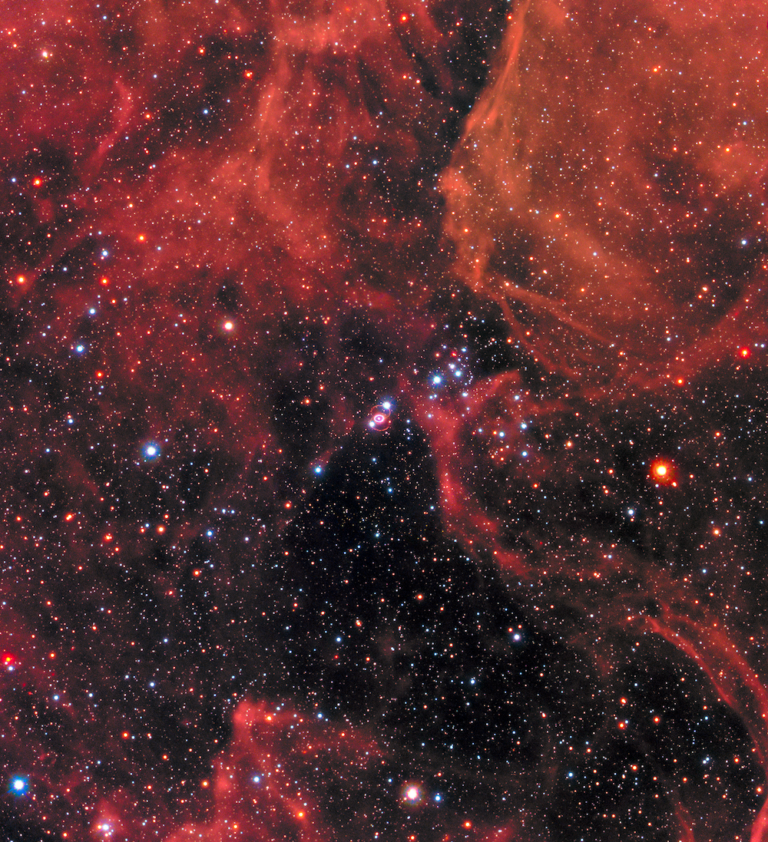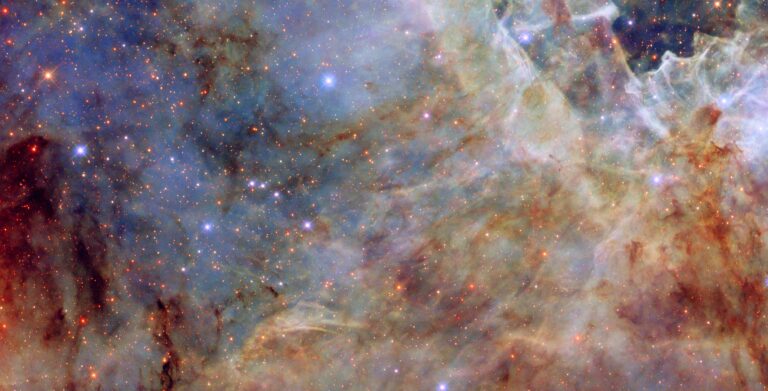Key Takeaways:
Barnard’s Star, the second-nearest star system to the Sun, spewed a large flare that increased its brightness, say astronomers in the United States. The discovery is a surprise: The star should be sedate because it’s an old red dwarf.
Red dwarfs are smaller, cooler, and fainter than the Sun. When young and middle-aged, they often spin fast enough to generate strong magnetic fields. These cause flares that can double the star’s brightness in just a few seconds.
As red dwarfs age, they spin more slowly. Barnard’s Star is old — probably 11 or 12 billion years old, which is more than twice the Sun’s age. And small periodic variations in the star’s light suggest it rotates slowly, only once every 130 days. Thus, the star should not emit flares.
He hoped to detect changes that signified orbiting planets. Instead, he noticed emission lines in the spectrum that indicated the star might be flaring, and he obtained two additional spectra that night. But because he was interested in planets rather than flares, he did not pursue the matter further.
Four years later, Cochran showed the spectra to Paulson, then a graduate student in Austin. Her team’s recent analysis indicates that despite the star’s old age, its hot blue flare resembled those from younger red dwarfs. The flare’s temperature was at least 8,000 kelvins, more than double the star’s temperature of 3,100 kelvins.
Unfortunately, spectra can’t determine just how much Barnard’s Star brightened that night. Paulson estimates the rise at visual wavelengths was half a magnitude or more. The flare lasted at least an hour.
“The star would be fantastic for amateurs to observe,” says Paulson. Located in northern Ophiuchus, Barnard’s Star is magnitude 9.55. Amateur observers can easily monitor its brightness and search for future flares. As the astronomers write, however, “Because Barnard’s star is considered to be one of our oldest neighbors, a flare of this magnitude is probably quite rare.”
American astronomer Edward Emerson Barnard discovered Barnard’s Star in 1916. It has a large proper motion — the greatest of any star — which results both from the star’s high speed through space and from its proximity to Earth. Precise parallax data from the Hubble Space Telescope indicate it is 5.98 light-years away, making it the second-closest star system to the Sun. Only the triple star Alpha Centauri is nearer.
The new discovery means all three of the three nearest red dwarfs are flare stars: Proxima Centauri, the faintest member of the Alpha Centauri system; Barnard’s Star; and Wolf 359 in Leo, which is 7.8 light-years from Earth. However, Proxima Centauri and Wolf 359 are sufficiently active that their flares were found more than half a century ago.
Paulson and her colleagues will publish their work in a future issue of Publications of the Astronomical Society of the Pacific.










